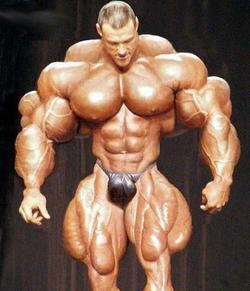The best way to improve any athletic skill is to stress your body on one day and then allow enough time for your body to recover before you stress it again. On one day, take a hard workout. On the next morning, your muscles feel sore. Take easy workouts until the soreness disappears and then take a hard workout again.
For your hard workouts, you can do far more work by exercising in sets, rather than continuously. If you can do six continuous pushups, you can probably do ten sets of two with twenty-second rests between each set. Do repeat sets of two until your muscles feel sore. Try to take workouts that are hard enough to make your muscles feel sore for no more than 48 hours. An ideal training program would consist of sets of three until you feel sore on the first day, take off the second day, do sets of five on the third day until you feel soreness, and rest on the fourth day. Repeat these four-day cycles, and you'll soon be ready to compete.
Weekly fitness tips - free






 18:41
18:41
 kaniamazdar
kaniamazdar











